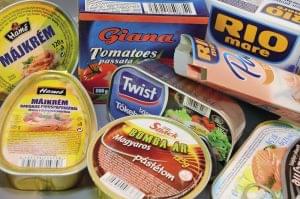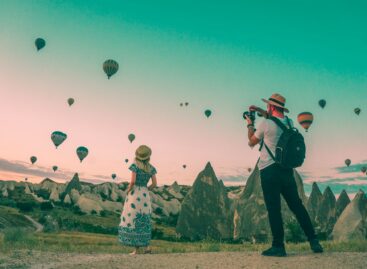This year’s drought also had a negative impact on the performance of the domestic canning industry
The domestic canning industry was able to buy a medium sweet corn crop and a weak green pea crop this year. According to the overview of the National Chamber of Agrarian Economy, the quality of vegetables intended for processing has also been damaged by the weather, due to the drought there are more defective products, which reduces the processing rate and the amount of finished products. Vegetable and fruit preserves produced in domestic factories continue to be exported to foreign markets in significant quantities.

This year’s drought did not make the work of the actors of the domestic canning industry any easier. Although the re-sowing of sweet corn and the harvesting of industrial tomatoes are still ongoing, based on the current data, average yields of sweet corn (14 t/ha) and weaker green peas (4.2 t/ha) have been achieved this season.
According to the overview of the National Chamber of Agriculture, in addition to lower yields than usual, there is also a problem with quality. Due to the unfavorable weather, there are more defective products, which reduces the rate of processing and the quantity of the finished product, thereby greatly impairing the efficiency of processing. Drought is a recurring problem every year in the cultivation of vegetables and fruits intended for use in the canning industry. The proportion of irrigated areas is still low, which worsens the production data and economic results in the drought years of this year and the previous ones.
The area used for field vegetable cultivation shows a decreasing trend in recent years, amounting to 74,000 hectares at the national level. Farmers grow sweet corn on about 50 percent of the total crop area, and green peas on 25 percent, and the utilization of the remaining 25 percent is shared by more than 20 types of vegetables. The situation is similar for fruit orchards. Peaches and cherries are more important products for the canning industry. Fluctuations in the annual yield can also be observed in this range of products.
Two-thirds of the harvested sweet corn and nearly 55-60 percent of the green peas are processed by the canning industry. About 200,000 tons of sweet corn and 40,000 tons of canned green peas are processed annually in the canneries. The share of leguminous plants in canning industry products is small, their annual volume purchased for processing is around 15-20 thousand tons. Among the smaller-volume products, canned cucumbers are worth mentioning, of which the canning industry processes about 7-9 thousand tons annually. Cherries are the largest amount of fruit processed by canning enterprises. Depending on the harvest, the industry buys approximately 35,000 to 40,000 tons of raw materials annually.
Related news
This year, 10 percent more new wine was produced than last year
🎧 Hallgasd a cikket: Lejátszás Szünet Folytatás Leállítás Nyelv: Auto…
Read more >More than 100 Hungarian farmers also demonstrated in Brussels
🎧 Hallgasd a cikket: Lejátszás Szünet Folytatás Leállítás Nyelv: Auto…
Read more >Hungarian champagne crowns the end-of-year holidays!
🎧 Hallgasd a cikket: Lejátszás Szünet Folytatás Leállítás Nyelv: Auto…
Read more >Related news
The Temu model is at a turning point: extra-cheap online imports may become more expensive from 2026
🎧 Hallgasd a cikket: Lejátszás Szünet Folytatás Leállítás Nyelv: Auto…
Read more >Climate-tolerant alternative in arable fields: peanuts could be one of the winners of climate change
🎧 Hallgasd a cikket: Lejátszás Szünet Folytatás Leállítás Nyelv: Auto…
Read more >Experience, timing, awareness: a new travel logic is emerging towards 2026
🎧 Hallgasd a cikket: Lejátszás Szünet Folytatás Leállítás Nyelv: Auto…
Read more >






